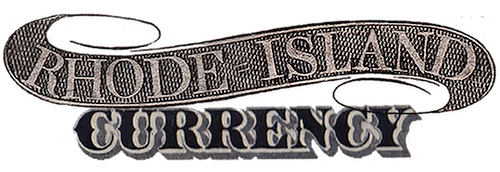First National Bank of Hopkinton
The First National Bank of Hopkinton was the reincarnation of the Richmond Bank, which had been founded in 1856 in the village of Alton in Richmond, Rhode Island. As the First National, charter #1054, this institution was briefly located in Wyoming, Rhode Island, before taking up quarters across the river in Hope Valley. Its offices were in the newly built Barber’s Hall, a 2 ½-storey brick commercial building at 1081 Main Street.
A 19th century account provides more detail:
“This bank was organized February 13, 1865; Directors: Amos G, Nichols, David L. Aldrich, Thomas T. Hoxsie, Edward Barber, Pardon K. Tefft, Samuel Phillips. George H. Olney, William R. Greene and Barber Reynolds. Amos G. Nichols was elected President; William R. Greene Vice President; and Joseph B. Potter Cashier. It commenced the regular business of banking May 2d, 1865; capital stock §100,000. It has paid the stockholders, up to July 1st, 1876, $99,500 in dividends, and has a surplus of S12,512.35. Amos G. Nichols has held the office of President from the beginning. William R, Greene held the office of Vice President until May 17, 1875, when he resigned, and Anson Greene was elected, and still holds the office. Joseph B. Potter has been Cashier from the first organization until now. Since the bank started, burglars have, at three different times, attempted to break open and rob the bank in the night time, but without success.” — Rev. S. S. Griswold, An Historical Sketch of the Town of Hopkinton, From 1757 to 1876. Hope Valley, R.I.: Wood River Advertiser Press, 1876.
During its life, the bank suffered at least nine robbery attempts, recounted with fascination in the Hope Valley Advertiser. It issued $1,092,810 in national currency in $1, $2, $5, $10 and $20 banknotes. 24 of these are in collector’s hands today, according to the National Bank Note Census.
When the Federal Reserve Banking System was introduced in the United States in 1913, the First National Bank of Hopkinton was the only bank in the state to reject its provisions. Its stockholders then voted to go into liquidation and its assets were transferred to the Washington Trust Company (formerly the Washington Bank of Westerly) on May 25, 1914. It was Washington Trust’s second acquisition in 114 years. Barber’s Hall in Hope Valley then became the local branch for Washington Trust. Being a trust company, it was required by federal statues to stop issuing its own currency.







A 19th century photo of Barber’s Hall, the bank’s home in Hope Valley.
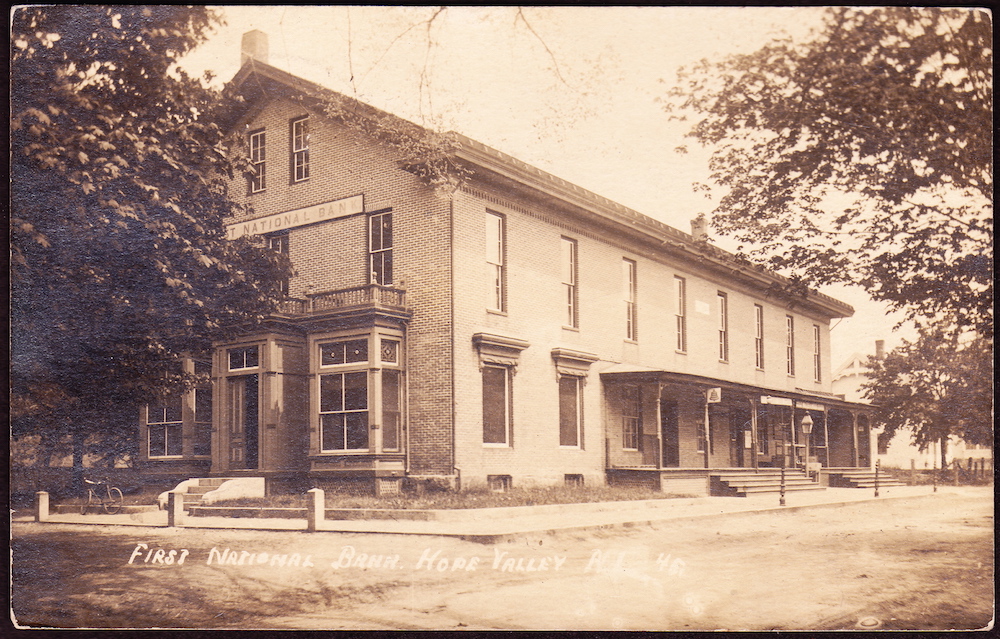
A postcard showing the bank’s offices at Barber’s Hall.
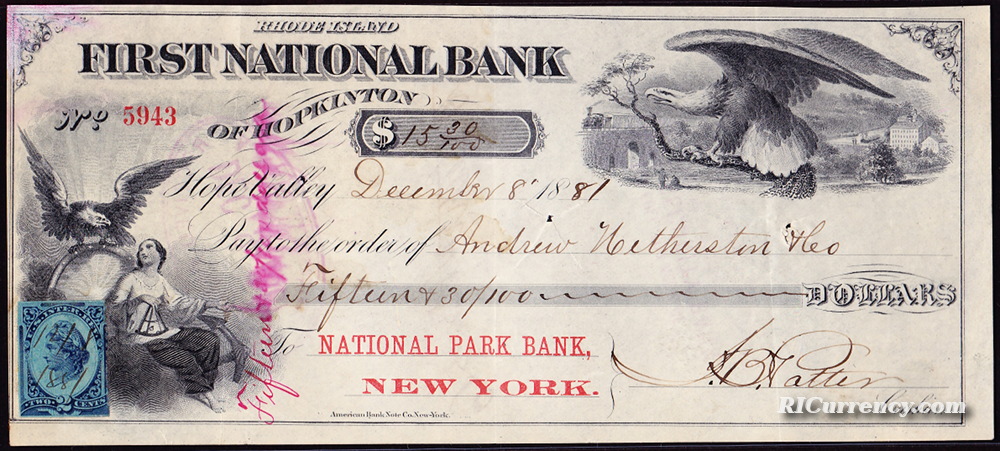
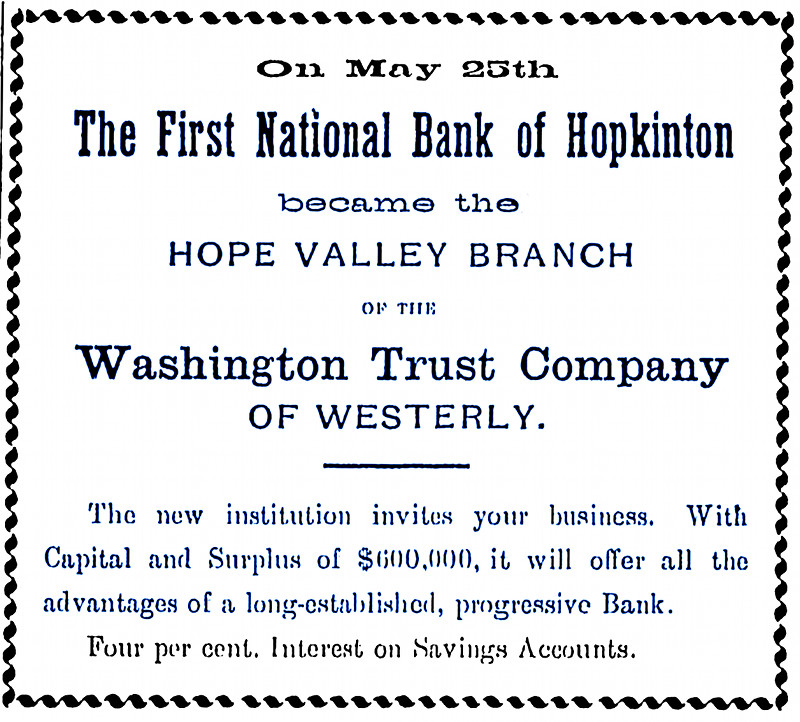
An advertisement from the Hope Valley Advertiser, June 4, 1914, announcing
the demise of the First National Bank of Hopkinton.
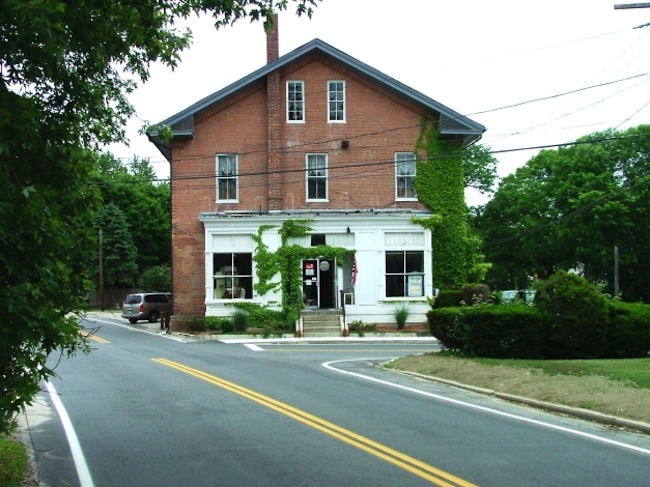
Barber’s Hall at 1081 Main Street, Hope Valley, today.
